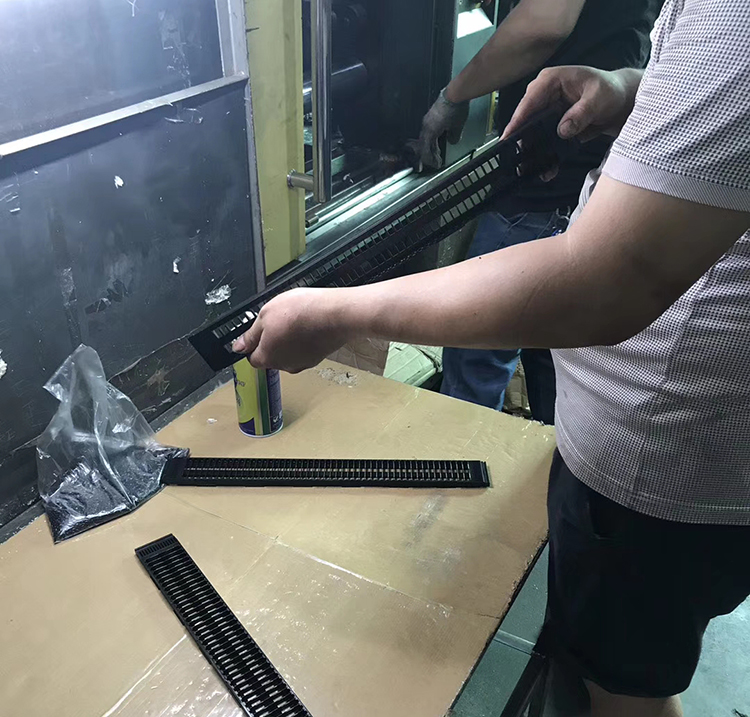Introduction
Maintaining gravity shelf roller tracks is crucial for seamless product movement and efficient inventory management. When these systems are well-kept, they enhance shelf organization, reduce labor costs, and improve the shopping experience. But neglecting regular upkeep can lead to product jams, uneven rolling, and even costly replacements.
So, how do you keep them in prime condition? This guide covers everything from routine cleaning to troubleshooting mechanical issues. Whether you’re a store owner, distributor, or retail designer, these expert maintenance tips will help extend the lifespan of your shelving system and ensure smooth product flow.
1. Understanding Gravity Shelf Roller Tracks
Picture this: A well-organized store where products slide effortlessly to the front, always within easy reach. That’s the magic of gravity shelf roller tracks. But to keep them working smoothly, you need to understand how they function and what can go wrong.
1.1 What Are Gravity Shelf Roller Tracks?
Think of these as silent workers behind the scenes, keeping inventory in perfect alignment. Using a slight slope and rolling mechanisms, they move products forward automatically—no manual adjustments required.
Key benefits:
✅ Ensures a neat and organized display.
✅ Reduces time spent restocking shelves.
✅ Keeps items accessible for customers.
1.2 Common Issues Due to Poor Maintenance
Even the best systems can run into trouble if neglected. Over time, dirt buildup, misalignment, and damaged rollers can lead to:
❌ Products getting stuck midway.
❌ Rollers slowing down or stopping completely.
❌ Shelves looking messy and unprofessional.
1.3 Why Regular Maintenance Matters
Ignoring upkeep can turn a smart shelving system into a frustrating mess. But with a few simple steps, you can prevent unnecessary breakdowns and extend its lifespan.
💡 Pro tip: A well-maintained system not only keeps products moving but also reduces overall maintenance costs.
2. Routine Cleaning to Prevent Build-Up
Here’s the deal: Dust and spills can bring even the best shelving system to a halt. Regular cleaning ensures uninterrupted movement and a spotless display.
2.1 How Dirt and Debris Affect Performance
You might not see it right away, but even a thin layer of dust can cause:
🔹 Slower product movement.
🔹 Uneven rolling, leading to stockpile issues.
🔹 Increased wear on the components.
2.2 Step-by-Step Cleaning Process
The good news? Cleaning is easier than you think.
🛠 What you need:
✔ Soft microfiber cloth
✔ Mild detergent
✔ Compressed air for hard-to-reach areas
🧼 Cleaning routine:
1️⃣ Wipe down rollers weekly to remove surface dust.
2️⃣ Use compressed air to clear debris from tight spaces.
3️⃣ Clean spills immediately to avoid sticky buildup.
2.3 Best Practices for Cleaning Without Damage
🚨 Avoid harsh chemicals that can wear down plastic components.
🚨 Skip abrasive scrubbers—they can scratch surfaces and affect movement.
🚨 Stick to a cleaning schedule to prevent issues before they start.
3. Checking for Roller Track Alignment Issues
Ever noticed products tilting to one side or getting stuck? That’s a sign your tracks are out of alignment.
3.1 Signs of Misalignment
If your shelves aren’t functioning smoothly, look out for these red flags:
🚩 Products move unevenly or stop midway.
🚩 The track appears slightly bent or misaligned.
🚩 There are visible gaps between rollers.
3.2 Step-by-Step Guide to Realigning Tracks
🔧 Quick Fix:
1️⃣ Use a leveler to check alignment.
2️⃣ Loosen screws and gently adjust the track into position.
3️⃣ Tighten everything back up and test with a product roll-through.
💡 Pro tip: Always double-check for loose fasteners—they’re a common cause of misalignment.
3.3 Preventing Misalignment in the Future
The best way to fix alignment problems? Stop them from happening in the first place!
✅ Install tracks on an even surface.
✅ Regularly inspect screws and bolts for loosening.
✅ Ensure weight distribution is balanced across the shelf.
4. Lubrication Tips for Smooth Operation
Think of lubrication as the secret ingredient for seamless movement. Without it, rollers can stiffen and become inefficient.
4.1 Why Lubrication is Essential
Neglecting lubrication can lead to:
⚠ Increased friction, making product movement sluggish.
⚠ Rollers wearing out faster than they should.
⚠ Unwanted noise when items slide forward.
4.2 Choosing the Right Lubricant
Not all lubricants are created equal!
🔹 Use: Silicone-based or dry lubricants—they don’t attract dust.
🔹 Avoid: Grease-based solutions, as they can cause buildup.
4.3 Application Tips for Maximum Efficiency
🛠 How to apply lubrication correctly:
1️⃣ Lightly spray or apply with a microfiber cloth.
2️⃣ Focus on the moving parts—don’t overdo it!
3️⃣ Repeat every few months or as needed.
💡 Bonus tip: If your store has high humidity, opt for anti-corrosive lubricants to prevent rust.
5. Inspecting and Replacing Worn-Out Rollers
Even with the best care, rollers don’t last forever. Knowing when and how to replace them is crucial.
5.1 Signs That Rollers Need Replacement
Here’s how to tell when it’s time for a swap:
🚨 Rollers make unusual noises.
🚨 Cracks or visible wear appear.
🚨 Items don’t slide as smoothly as before.
5.2 How to Safely Remove and Replace Rollers
⚙ Follow these steps for a hassle-free replacement:
1️⃣ Remove the track from the shelving unit.
2️⃣ Pop out the damaged rollers using a screwdriver.
3️⃣ Snap new ones into place and test for smooth rolling.
5.3 Choosing the Best Replacement Rollers
Not all rollers are the same!
✔ Check the material: Plastic vs. metal options.
✔ Match the size: Ensure compatibility with your track system.
✔ Go for quality: High-durability rollers reduce future replacements.
💡 Pro tip: Keep spare rollers on hand so you can replace them immediately when needed.
This is just the beginning! By following these maintenance steps, you’ll keep your shelves running like new for years to come. Stay tuned for more tips in the next sections! 🚀
6. Preventing Overloading and Weight-Related Damage
Here’s something most people don’t think about—overloading can damage the entire system! Too much weight puts strain on rollers, making them wear out faster.
6.1 Understanding Weight Limits
Overpacking shelves might seem harmless, but it can cause:
⚠ Slower product movement due to excessive pressure.
⚠ Rollers bending or breaking over time.
⚠ Misalignment, leading to jams and uneven flow.
💡 Quick tip: Always check the manufacturer’s recommended weight capacity to avoid long-term damage.
6.2 How to Distribute Weight Evenly
Want to keep shelves running smoothly? Proper weight distribution is key.
✅ Place heavier products at the back to create a steady rolling force.
✅ Avoid stacking items too high—this can overload specific rollers.
✅ Space products evenly to reduce excess pressure on certain sections.
6.3 Reinforcement Options for Heavy-Duty Use
If your store carries heavier inventory, upgrading your system can save you money in the long run.
🔹 Consider reinforced tracks for better durability.
🔹 Opt for stronger roller materials to handle heavier loads.
🔹 Regularly inspect fasteners and supports to prevent unexpected failures.
💡 Pro tip: If your system consistently struggles with weight, switching to a metal-reinforced track could be a game-changer.
7. Addressing Common Mechanical Failures
Even the most reliable system can run into trouble. The good news? Most issues are easy to fix!
7.1 Identifying Common Problems
Here are some signs your system might need attention:
🚨 Rollers not spinning smoothly—this could indicate dirt buildup or misalignment.
🚨 Products getting stuck frequently—a sign of worn-out rollers.
🚨 Shelves making strange noises—possible track warping or loose components.
7.2 Troubleshooting and Quick Fixes
No need to panic! Here’s how to get your shelves back in action:
🛠 Step 1: Check for dirt buildup and clean thoroughly.
🛠 Step 2: Inspect alignment and make small adjustments.
🛠 Step 3: Look for loose screws and tighten them.
7.3 Long-Term Solutions for Better Performance
Want to prevent breakdowns before they happen? A proactive approach is your best bet.
✔ Schedule routine inspections—catch issues before they escalate.
✔ Use high-quality components to extend lifespan.
✔ Invest in professional maintenance if problems persist.
💡 Remember: A well-maintained system means fewer headaches and lower costs!
8. Seasonal and Environmental Maintenance Considerations
Did you know temperature and humidity can impact performance? Let’s talk about how to keep your system working in all conditions.
8.1 How Climate Affects Performance
Extreme weather can cause unexpected problems, such as:
🔥 Heat-related expansion, making tracks misalign.
❄ Cold temperatures stiffening rollers, leading to sluggish movement.
💦 Moisture buildup, increasing the risk of rust or mold.
8.2 Protecting Against Moisture and Corrosion
Damp environments can wreak havoc on your system, but you can prevent damage with these steps:
✅ Keep storage areas well-ventilated to reduce humidity.
✅ Use anti-corrosion treatments on metal components.
✅ Avoid placing shelves near refrigeration units where condensation forms.
8.3 Adjusting Maintenance Based on Environment
Different locations require different approaches.
📍 For humid areas: Increase lubrication frequency and use moisture-resistant materials.
📍 For cold environments: Ensure rollers are designed to handle temperature shifts.
📍 For dusty spaces: Clean more frequently to prevent buildup.
💡 Bonus tip: If your store undergoes seasonal shifts, adjust maintenance schedules accordingly!
9. Training Staff for Better Maintenance
Here’s the truth—your shelving system is only as good as the people handling it! Proper training ensures long-lasting efficiency.
9.1 Why Staff Training is Crucial
Without proper guidance, common mistakes can lead to avoidable damage, such as:
🚩 Employees overloading shelves.
🚩 Incorrect product placement causing misalignment.
🚩 Lack of cleaning, leading to product flow issues.
9.2 Best Practices for Staff Training
Getting your team on board doesn’t have to be complicated.
📌 Create simple maintenance checklists for employees to follow.
📌 Demonstrate best practices during onboarding sessions.
📌 Encourage staff to report issues early before they escalate.
9.3 Setting Up a Preventative Maintenance Plan
Don’t leave maintenance to chance—structure it into your routine!
✔ Assign responsibilities so upkeep isn’t overlooked.
✔ Implement a monthly inspection schedule to stay ahead of issues.
✔ Keep a log of previous maintenance checks for reference.
💡 Pro tip: A well-trained team extends the lifespan of your equipment and reduces costly repairs down the road.
10. When to Upgrade or Replace Gravity Shelf Roller Tracks
At some point, repairs might not be enough. Knowing when to replace your system can save you money and improve efficiency.
10.1 Signs It’s Time for an Upgrade
If you’re experiencing these problems too frequently, it might be time for an overhaul:
🚨 Recurring product jams despite regular maintenance.
🚨 Rollers needing constant replacement due to excessive wear.
🚨 Track misalignment that won’t stay fixed.
10.2 Choosing the Right Replacement System
Upgrading can feel overwhelming, but here’s how to make the right choice:
🔹 Assess your needs—do you require a heavier-duty system?
🔹 Look for new features like reinforced rollers or modular designs.
🔹 Compare materials—PET plastic vs. metal for long-term durability.
10.3 Cost vs. Benefit: Repair or Replace?
💰 When repairs cost more than 50% of a new system, replacement is the smarter choice.
🛠 Repairs make sense if:
✅ The problem is minor and easy to fix.
✅ The track is relatively new and still under warranty.
🚀 Replacement is better if:
✅ Frequent breakdowns are disrupting store operations.
✅ The existing system no longer meets inventory demands.
💡 Final Thought: Investing in an upgrade reduces downtime, enhances efficiency, and saves money in the long run.
Conclusion
A well-maintained system keeps products moving effortlessly while saving time and money. By following these maintenance tips, you can:
✔ Prevent breakdowns and reduce repair costs.
✔ Improve efficiency and keep shelves looking organized.
✔ Extend the lifespan of your equipment.
Need expert advice or high-quality shelving solutions? Contact us today and let’s optimize your store!



